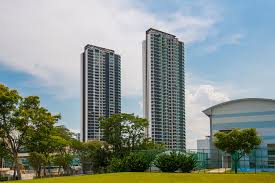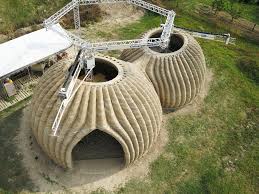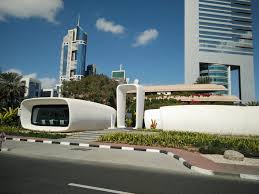
Modular construction and 3D printing: Is it the future of architecture?
This article aims to analyze tangible experiences in modular construction, while presenting real statistics and results that can benefit specialists in the field.
Construct Vision Team
2/5/202510 min read
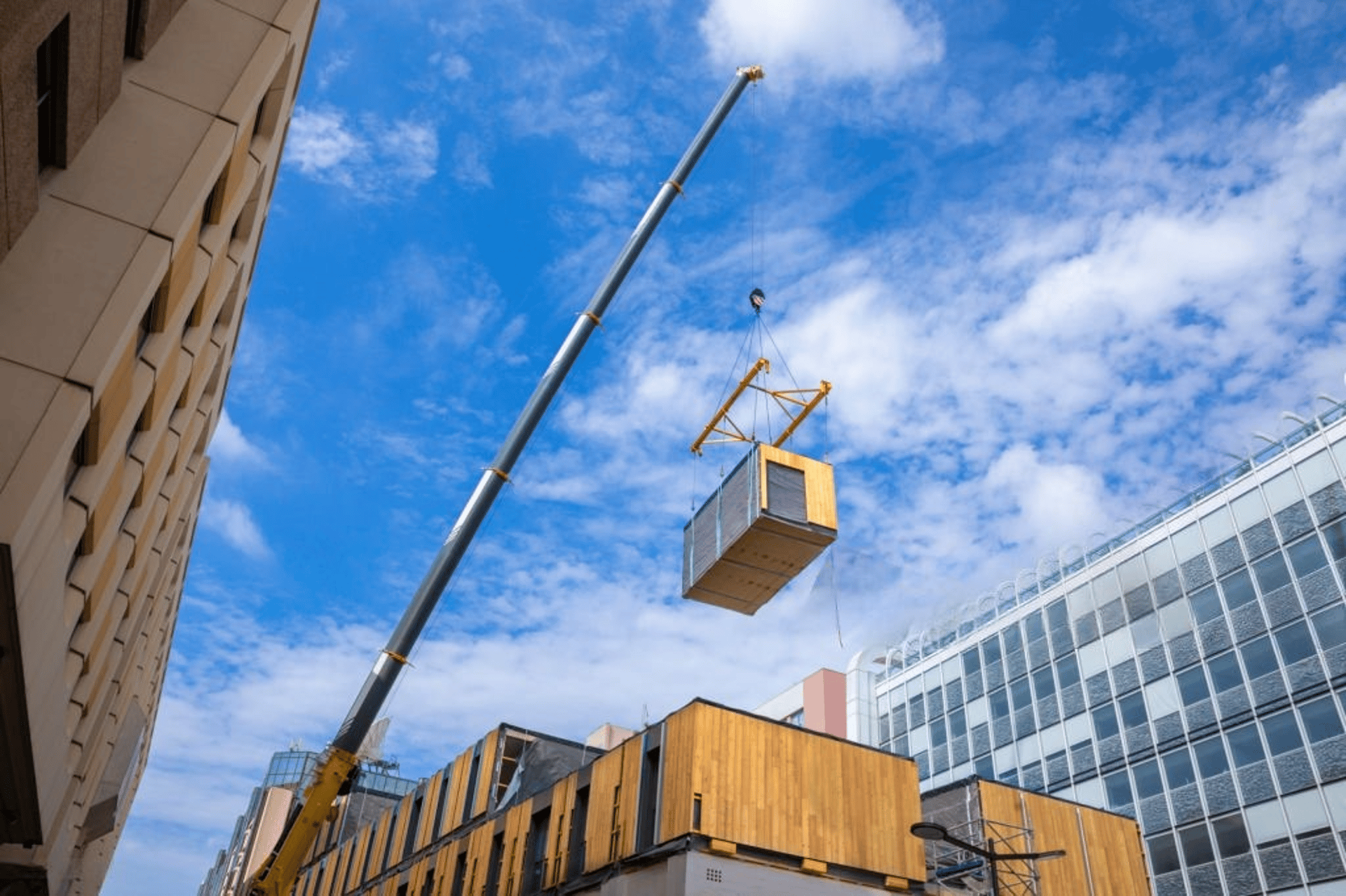
The construction industry has witnessed tremendous developments in recent years thanks to modern technologies such as modular construction and 3D printing. These modern methods not only positively impact efficiency in terms of time and cost, but they can also be more sustainable and environmentally friendly.
In this article, we will review a comprehensive definition of these techniques, along with practical examples and figures that illustrate their impact on the construction industry.
This article aims to analyze tangible experiences in modular construction, while presenting real statistics and results that can benefit specialists in the field.
What Does Modular Construction Mean?
Modular construction is a building method that relies on manufacturing prefabricated building units or components in a factory or workshop, and then transporting them to the construction site for assembly and installation. These units can be complete rooms or parts of a building, such as walls, floors, or ceilings.
Advantages of Modular Construction:
- Rapid Technology: The units are manufactured in the factory in parallel with the preparation work at the construction site, which reduces the total construction time.
According to a study conducted by McKinsey, modular construction can reduce construction time by up to 50% compared to traditional methods. For example, the Marriott hotel in New York was built using modular construction in just 90 days, while it would have taken more than a year using traditional methods.
- Greater Ability to Control High Quality: The units are manufactured in a controlled environment (factory), which reduces errors and ensures higher quality. The materials remain protected from weather conditions during manufacturing.
- Reducing Construction Waste: Modular construction is more efficient in using materials, which reduces construction waste. Excess materials can also be reused in other units.
According to a report by the Modular Building Institute, modular construction can reduce waste by up to 90% compared to traditional construction.
- Flexibility in Expansion and Relocation: The units can be modified or added later, making modular construction suitable for future expansions. The units can be dismantled and relocated to other sites if necessary.
- Economic Feasibility: Although the initial cost may be higher in some cases, the time and labor savings can offset these costs.
Dodge Data & Analytics estimates that modular construction can reduce total costs by up to 20%.
- Sustainability in Manufacturing: Modular construction consumes less energy and reduces carbon emissions compared to traditional construction. Environmentally friendly materials can be used in manufacturing."
Challenges of Three-Dimensional Printing Technology:
Legal Constraints: Many countries still lack regulations governing the use of three-dimensional printing in construction.
Materials: There is a need to develop more durable materials that are suitable for use in three-dimensional printing.
The Relationship Between Modular Construction and Three-Dimensional Printing
The relationship between modular construction and three-dimensional printing lies in their ability to integrate to achieve greater efficiency in the construction process. Three-dimensional printing can be used to manufacture modular units with high precision, which enhances the quality of construction and reduces the time required for assembly. In addition, three-dimensional printing can produce complex components that meet the needs of modern architectural design, while modular construction provides the general framework for rapid assembly.
With the continued development of these two technologies, we can witness a radical transformation in how buildings are designed and constructed. The future may include:
1. Smart Buildings: Modern technologies such as the Internet of Things (IoT) can be integrated into three-dimensionally printed modular units to create smart buildings that can adapt to the needs of residents.
2. Greater Sustainability: By using recycled materials and construction methods that reduce waste, architecture can become more environmentally friendly.
3. Complex Designs: Three-dimensional printing will allow architects to experiment with innovative designs that were previously impossible.
Both technologies contribute to reducing the carbon footprint of the construction industry, achieving sustainability, and preserving the environment:
• Modular construction reduces waste by up to 90%.
• Three-dimensional printing consumes fewer materials and reduces carbon emissions.
Important experiments in using both techniques:
1. "Office of the Future" project in Dubai: It is considered the first office building to be printed entirely with three-dimensional printing technology. The project was implemented using a giant printer to create the structure within a few weeks, which shows the possibility of significantly reducing time and costs.
2. "Ten Fold Engineering" project: A British company developed modular units that are portable and can be installed within minutes. Three-dimensional printing can be used to manufacture these units with high precision, which enhances their efficiency.
3. "ICON" project in Texas, United States: The company ICON used three-dimensional printing to build low-cost homes in less than 24 hours. This technology can be combined with modular construction to create entire residential communities in record time. The company printed a house in just 24 hours, at a cost estimated at $10,000.
4. "B2" project in Brooklyn, United States: The tallest modular residential building in the world, consisting of 32 floors, and was built in record time."
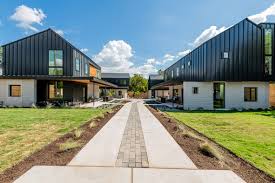

Future Challenges and Solutions for Modular Construction with Three-Dimensional Printing:
Despite the many benefits of modular construction, it faces challenges that must be addressed to ensure its adoption on a wider scale. The following is an analysis of the main challenges, with innovative solutions that support its future, especially in relation to flexible design and integration with modern technologies such as three-dimensional printing and artificial intelligence.
Limited Design Flexibility:
One of the most prominent criticisms of modular construction is that it imposes constraints on design, as the models are built within predefined dimensions in factories, which may limit architectural creativity.
Proposed Solutions:
1- Using Customizable Modular Units:
• Developing more diverse modular units that can be combined in various ways to create unique architectural designs.
• Adopting dynamic installation systems that allow for easy modification and expansion of units.
2- Integration with Digital Manufacturing and Generative Design:
• Using artificial intelligence programs such as Autodesk Generative Design to create more complex modular designs based on project data.
• Taking advantage of virtual reality (VR) and augmented reality (AR) to test designs before manufacturing.
3- Developing Flexible and Lightweight Building Materials:
• Experimenting with new materials that can be easily shaped in factories without losing structural strength, such as engineered wooden structures and smart composite panels.
Integration of Modular Construction with Three-Dimensional Printing:
Although three-dimensional printing (3D Printing) has revolutionized construction, its integration with modular construction is still in its early stages due to the difference in manufacturing methods.
Solutions:
1- Using Three-Dimensional Printing to Create Customized Modular Parts:
• Three-dimensional printing can be used to produce customized modular units according to project needs, which allows for more complex designs.
• Interior and exterior structures of modular buildings can be manufactured using three-dimensionally printed materials such as printed concrete, recycled plastic, and even metals.
2- Taking Advantage of Three-Dimensional Printing to Reduce Cost and Time:
3- Developing Mobile Modular Factories for Three-Dimensional Printing:
• Three-dimensional printers can be integrated into mobile factories, so that modular parts are manufactured directly on the construction site, which reduces transportation costs.
The Role of Artificial Intelligence in Improving Modular Construction:
With the increasing complexity of projects, architects and developers need to analyze large amounts of data to make informed decisions about design, implementation, and quality.
Solutions:
1- Using Artificial Intelligence in Smart Planning and Design:
• Analyzing geographic location data to determine the best modular design strategies.
• Developing intelligent design algorithms capable of optimizing material consumption and spatial planning of units.
2- Improving Manufacturing Quality Through Machine Learning:
• Artificial intelligence can monitor defects in modular production and improve manufacturing quality in factories using advanced sensors.
• Systems such as IBM Watson IoT are capable of analyzing manufacturing data in real-time and reducing production errors by up to 30%.
3- Accelerating Construction Processes Through Smart Robots:
• Self-assembly robots can assist in installing modular units on-site, reducing the need for human labor and improving implementation speed.
• Example: The SHoP Architects project in New York, which uses modular construction robots to reduce construction time by 40%.
Global Experiences and Lessons Learned
1- The Experience of "Huoshenshan Hospital" in China: Construction in 10 Days
With the outbreak of the Coronavirus in early 2020, China had to provide specialized hospitals at a record speed. In the city of Wuhan, the design and implementation of the "Huoshenshan" hospital with a capacity of 1000 beds were completed in just 10 days using modular construction techniques.
• The units were prefabricated in factories at an average of 500 units per day.
• More than 7,000 workers participated in installation processes around the clock.
• The design relied on pre-equipped modular units with an area of 10,000 square meters.
Results:
Unprecedented Speed: Modular construction reduced the implementation period by 80% compared to traditional hospitals.
Higher Quality Control: Due to the manufacturing of units in a controlled environment.
Repeatability and Flexibility: The hospital can be dismantled and used in other locations.
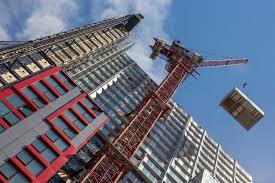

2- "Modular Tower" Project in Singapore: The Tallest Modular Skyscraper
In Singapore, the term "modular tower" (Modular Tower) is used to describe several projects that rely on modular construction technology. One of the most prominent of these projects is:
- The "Clement Canopy" tower, which consists of 40 floors and is 140 meters tall in Singapore, is one of the most prominent examples of adopting modular construction techniques in luxury residential projects. Upon its completion, it was considered the tallest modular residential building in the world. The tower was built using prefabricated modular units at a rate of 85%.
1899 modular units were manufactured in factories and shipped to the construction site.
The use of modular construction reduced the construction time from 30 months to 24 months.
The project saved approximately 35% of on-site labor, and led to improved safety and reduced accidents.
Results:
Improved Implementation Efficiency: Reduced material waste by 30%.
Improved Sustainability: Reduced energy and water consumption during manufacturing.
Flexible Design: Modular construction allowed for the easy creation of apartments with varying sizes.
3- Social Housing Project in Sweden: Sustainability and Economy
Sweden is one of the leading countries in applying modular construction techniques to solve the housing crisis. The company "BoKlok", in collaboration with IKEA and Skanska, used modular construction technology to create thousands of low-cost housing units.
120,000 modular housing units have been built since 1996.
The units use standardized designs that can be adapted to the needs of residents.
The construction process takes only 6 months compared to 12-18 months in traditional construction.
Results:
Reduced costs by 30% by reducing material waste.
Reduced carbon emissions thanks to prefabrication.
Achieved sustainability by using environmentally friendly materials.
Towards a Smarter and More Sustainable Future:
Global experiments in modular construction prove that this technique provides effective solutions to the challenges of the construction sector, including speed of implementation, cost reduction, and quality improvement.
By studying these projects, architects and engineers can draw important lessons on how to apply modular construction in innovative and effective ways.
Despite challenges such as design constraints and high initial costs, the global trend towards sustainability and technology makes modular construction an option that cannot be ignored. Its future looks promising, as the experience has proven that it is not a rigid technique, but can be developed to become more flexible and creative. By integrating three-dimensional printing, artificial intelligence, and smart robots, its current drawbacks can be overcome and it can be transformed into a future model for fast and sustainable construction. This opens up new horizons for this construction method."
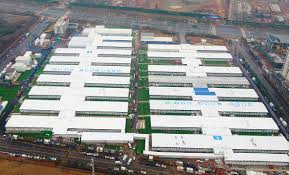

Share the post
Subscribe to our newsletters:
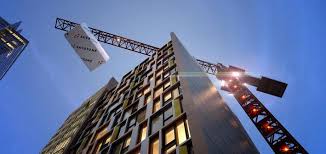

Modular Construction Used in Two Ways:
Permanent Modular Construction:
It is used in buildings with repeated units or modules, where the units are used to create permanent buildings, such as schools, hospitals, hotels, and residential buildings.
Relocatable Buildings:
It is used in temporary facilities or emergency cases. These are units that can be moved and reused in different locations, such as temporary offices, additional classrooms, or mobile clinics.
Challenges Facing This Technology:
Design Constraints: There may be design constraints due to the need to standardize the units.
Transportation: Transporting large units requires careful planning and may be costly in some cases.
Legal Details: Laws and regulations related to modular construction may differ from one area to another, which requires additional procedures to obtain permits.
Is Modular Construction the Future?
Here are some opinions of architects and developers about modular construction technology:
- A report from the website "FasterCapital" indicates that modular construction reduces the environmental impact of construction by reducing waste, energy consumption, and greenhouse gas emissions. It also enhances social and economic benefits by improving safety, quality, affordability, and accessibility.
- According to the website "Modular Home", the modular system is of great importance to builders and developers, as they can benefit from the speed of assembly and the reduction of costs associated with it.
- A report in the Emirati newspaper "Al Bayan" stated that modular construction provides design flexibility and scalability, allowing developers to customize building configurations while maintaining consistency in quality and performance.
- An article from "Al Awda Contracting Company" indicated that although modular construction contributes to accelerating the completion of projects, it may impose constraints on design flexibility. Structural engineers can enhance collaboration between designers and construction teams to explore innovative design solutions that align with the requirements of modular construction.
These opinions highlight the benefits and challenges associated with modular construction technology, which helps architects and developers make informed decisions when adopting this technology in their future projects.
Three-Dimensional Printing: A Revolution in the Construction Industry
Three-dimensional printing (3D Printing) or additive manufacturing is a technology that relies on creating three-dimensional structures by printing successive layers of materials, such as concrete or plastic. This technology allows for the construction of complex structures at a lower cost and in less time.
In the field of construction, this technology is used to create walls or even complete buildings. The main advantages of three-dimensional printing are:
Free Design: Three-dimensional printing allows for the creation of complex shapes that are difficult to achieve with traditional methods.
Cost Reduction: It reduces the need for labor and reduces material waste. According to a study conducted by the University of Eindhoven, three-dimensional printing can reduce construction costs by up to 30%.
Speed: Complete structures can be printed within hours or days, compared to weeks or months in traditional construction. Three-dimensional printing can build a small house in less than 24 hours.
In 2021, the company ICON printed a complete house in Texas in just 24 hours.
Sustainability: Environmentally friendly materials, such as recycled concrete, can be used. In general, this technology consumes fewer materials and reduces waste.
The "TECLA" project in Italy, which is a completely printed house using local and sustainable materials, is an example of how to reduce the carbon footprint. It was completed in 200 working hours."
